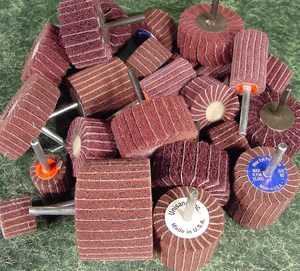I'm working on a project that has a piece of curved (concave) crotch walnut. The curve is in three dimensions and is roughly 8"x6" in x-y and curves inwards roughly .5" in the z axis. I used a spokeshave to get down to the final shape, but due to the grain direction of the crotch walnut it was very difficult for me to get a perfect surface finish.
That leads me to sanding. What's a good way to sand a surface like this? Obviously I can just back the sandpaper with my fingers, but I was taught that this is poor technique. I need grits down to 120 or so (a few light tool marks left that I can't get rid of with the spokeshave). I was thinking that an interface pad to my orbital sander might work, but I'm concerned that the paper will fold and effectively sand some places, but not others.
Google shows tons of results for flexible sanding sponges, but I can't make heads from tails from all the different options. Several appear to be made of different materials than the sand paper I'm used to and are rated "coarse" or "fine", but don't state grit. I'm sure there is some subjectivity here, but I'm curious what the pros/cons of the different options are.



